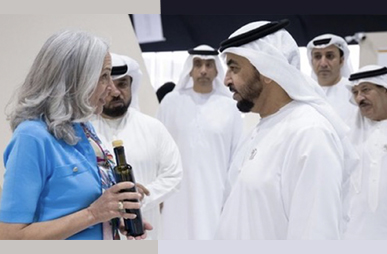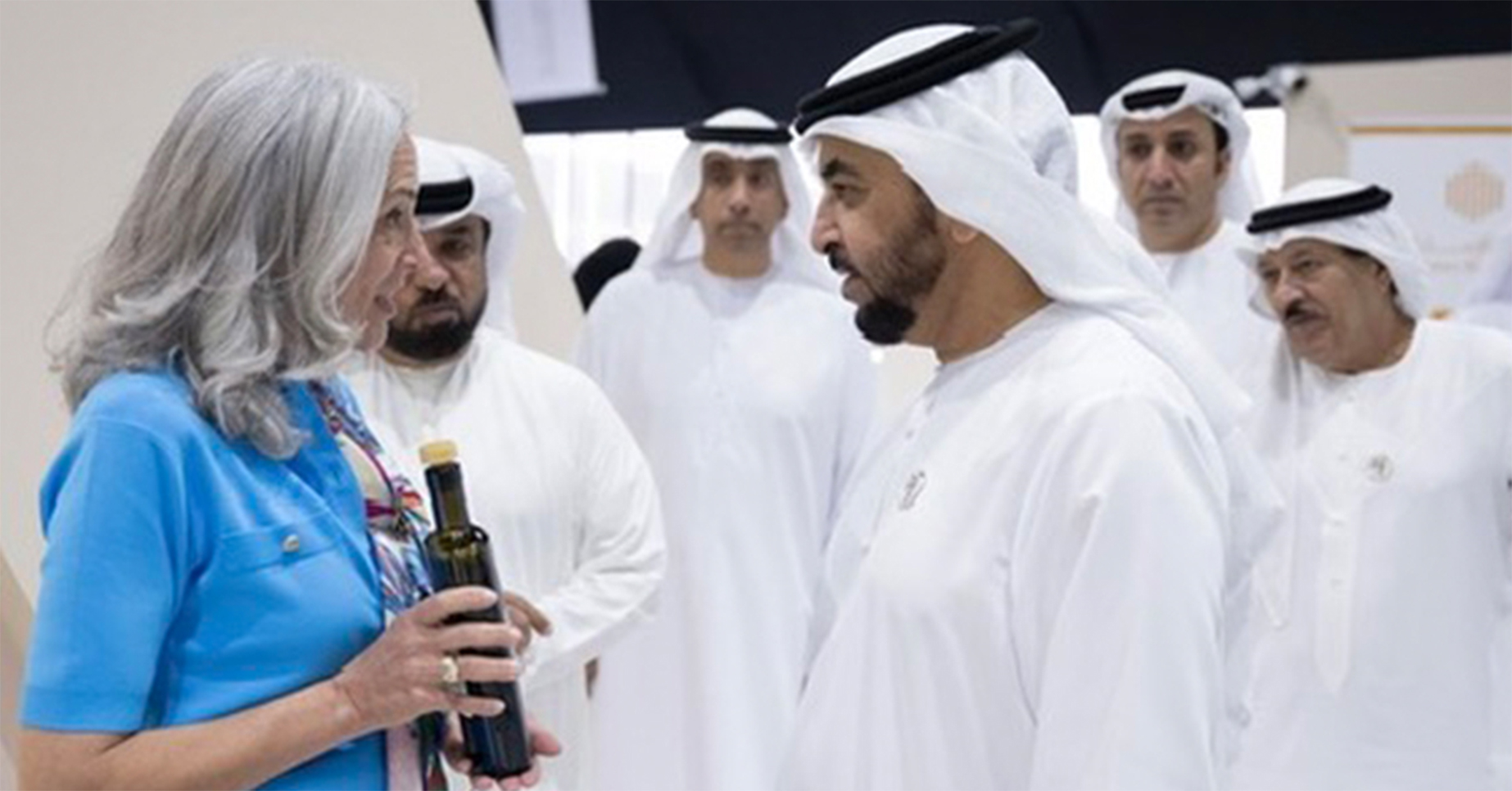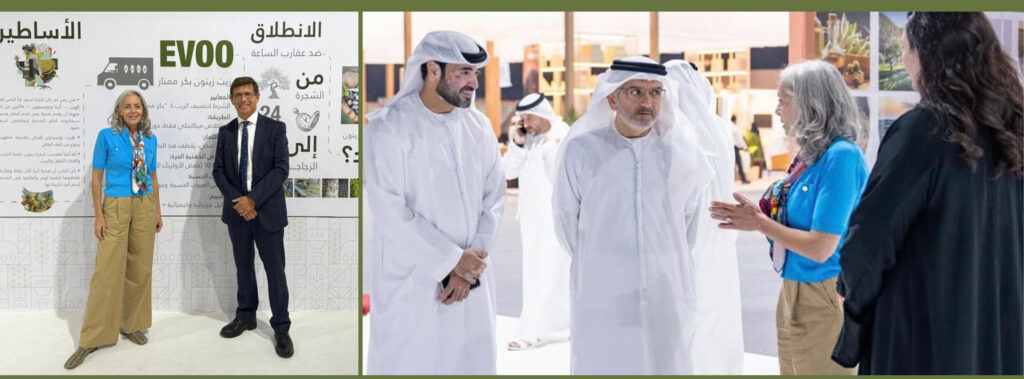
Where olive oil excellence greets date-pride
Honored Moments at Al Dhafra Date Festival & Auction
The vast desert of Abu Dhabi’s Al Dhafra region once again became the stage for cultural heritage, tradition and innovation. Among this year’s highlights, the festival — held under the patronage of His Highness Sheikh Hamdan bin Zayed Al Nahyan — welcomed distinguished guests and featured moments that underscored the wider significance of olive-oil culture alongside the date-palm traditions.
At the heart of the event stood a symbolic gesture: the presentation of an Argentine extra-virgin olive oil, one of the laureates of Olio Nuovo Days, acting as a link between hemispheres, civilisations and flavours. The festival, organised by the Abu Dhabi Heritage Authority, provided the backdrop for discussions around quality, authenticity and traceability in olive-oil production.
Educational engagement also featured prominently. A bilingual (English & Arabic) cultural timeline — tracing olive-oil production from its origin and the beginning of its cultivation in the Levant — was introduced, aligning ancient agrarian roots with modern labelling requirements such as variety, region, harvest date and method of extraction. The timeline emphasises that olive oil is not merely a culinary commodity but a living heritage.

OLIVE TREE DIPLOMACY
During the festival Ms Dechelette met H.E. Emilio Pin Godos, Ambassador of Spain to the UAE, to discuss the journey of the olive tree. She later met H.E. Rashed Abdulkarim Al-Balushi, Executive Director of the Abu Dhabi Global Registration Authority, where the conversation centred on the core values of quality, authenticity and traceability.

CONTINUING THE JOURNEY: FOUR SEASONS OF LEGACY AND RELIABILITY
This marks the fourth consecutive year that Emmanuelle Dechelette has been invited to the festival, reinforcing the ongoing link between Olio Nuovo Days and the region’s commitment to institutional heritage and agricultural excellence.
Visitors and professionals alike were reminded that each drop of a quality extra-virgin olive oil carries tradition, terroir and trust — and that public education remains key to unlocking its full value.
With gratitude to Shawati Magazine, the Abu Dhabi Heritage Authority and Turathuna AE for their roles in celebrating this rich and enduring tradition.
THE OLIVE TREE’S CRADLE
Studies reveal that the wild olive tree and its cultivated forms exhibited significant genetic differentiation within the Mediterranean basin, reflecting three major refuges: the Near East (Levant), the Strait of Gibraltar, and the Aegean region.
Although wild forms were present in multiple zones, the Levant is firmly identified as the primary cradle of domestication of the olive tree.
Between the Mediterranean and Mesopotamia, the Fertile Crescent provided ideal conditions: rich river valleys, a mild climate and a remarkable diversity of wild species — wheat, barley, lentils and wild olive trees. As early as 10,000 B.C., communities in the region began to domesticate plants and animals. Located at the crossroads of Africa, Asia and Europe, this region gave rise to the first villages, first granaries and earliest agricultural societies. And it was here that humankind first learned to cultivate the earth — giving rise to the civilisations that shaped the Mediterranean world.
Moreover, olive trees have long been valued in more arid and marginal lands because of their relative drought tolerance — they demand far less water than many other crops, and thus became a smart choice for cultivation in zones where water was limited and other plants struggled.